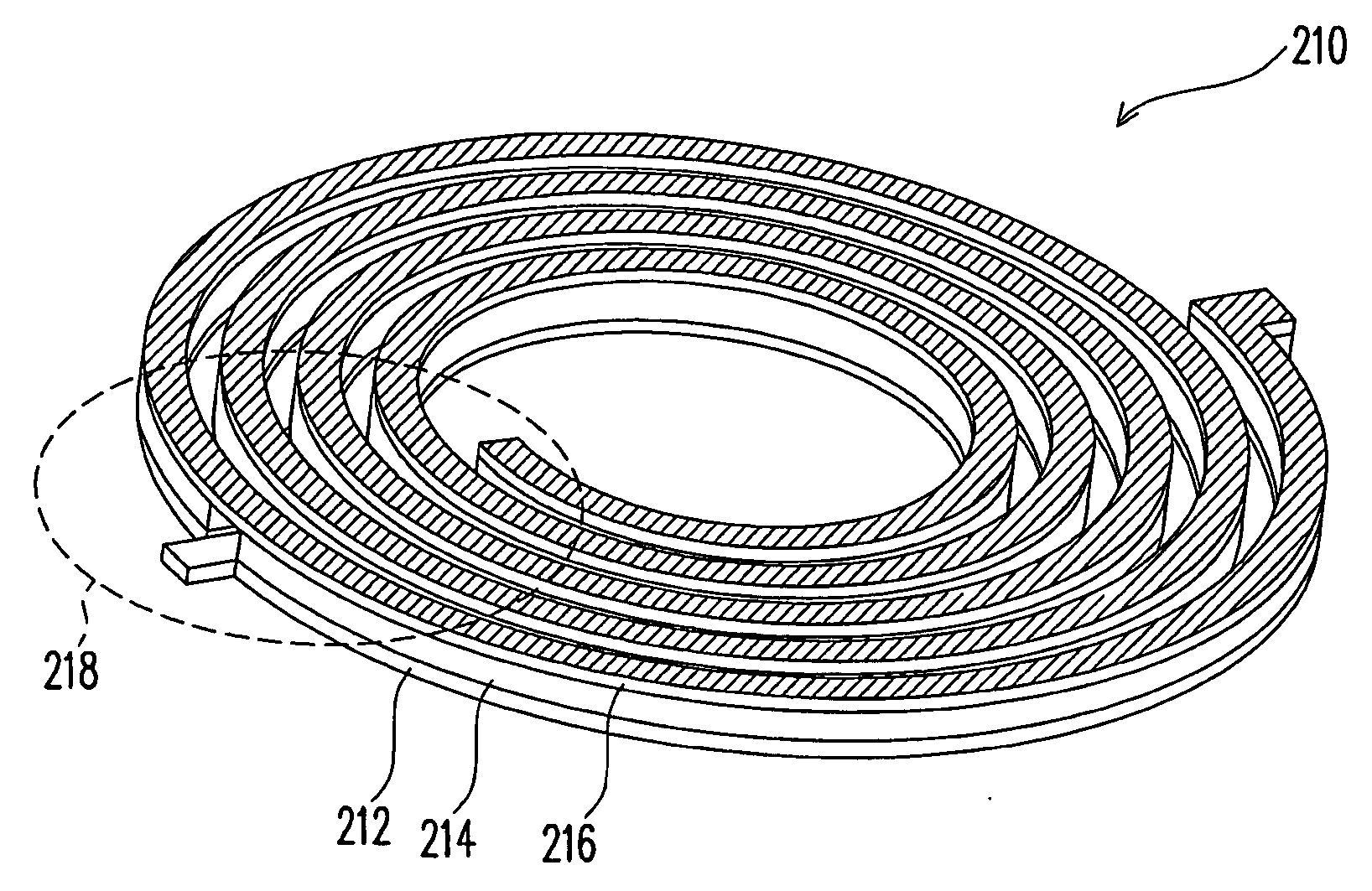Planar-like inductor coupling structure
- Summary
- Abstract
- Description
- Claims
- Application Information
AI Technical Summary
Benefits of technology
Problems solved by technology
Method used
Image
Examples
Embodiment Construction
[0033]Reference will now be made in detail to the present embodiments of the invention, examples of which are illustrated in the accompanying drawings. Wherever possible, the same reference numbers are used in the drawings and the description to refer to the same or like parts.
[0034]The circuit layout between two inductors adopted in the coupling mechanism of the present invention is basically different from the conventional design. In the present invention, an overlapping region between two planar inductors serves as the major inductor coupling mechanism, and the dimension of the inductor overlapping region may be easily adjusted. The larger overlapping area between the two inductors causes the larger inductor coupling effect. Thus, the coupling effect may be adjusted according to the design requirement, and meanwhile the additional chip design space may be saved due to the overlapping between the inductors. This inductor coupling mechanism can avoid the problems of a too small or ...
PUM
 Login to View More
Login to View More Abstract
Description
Claims
Application Information
 Login to View More
Login to View More - R&D
- Intellectual Property
- Life Sciences
- Materials
- Tech Scout
- Unparalleled Data Quality
- Higher Quality Content
- 60% Fewer Hallucinations
Browse by: Latest US Patents, China's latest patents, Technical Efficacy Thesaurus, Application Domain, Technology Topic, Popular Technical Reports.
© 2025 PatSnap. All rights reserved.Legal|Privacy policy|Modern Slavery Act Transparency Statement|Sitemap|About US| Contact US: help@patsnap.com



